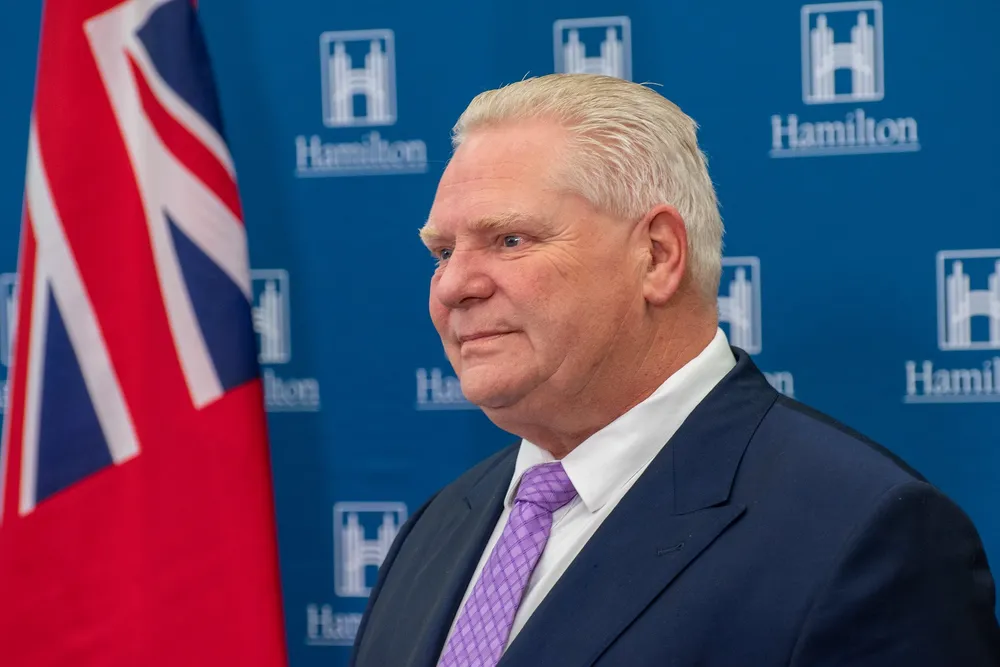Trump tariffs and Canadian response roil border grid balancing system
Intercontinental electricity sales are aimed at enhancing reliability on both sides of national boundary

Ontario, Canada, has stood down on threats to impose fees on power sales to the US, but President Donald Trump’s trade war against the nation’s northern neighbour could still threaten grid reliability and send electricity prices soaring in both countries, regional transmission operators and others warn.
Ontario Premier Doug Ford yesterday suspended a 25% surcharge on electricity sales to the US on the promise of trade talks with Secretary of Commerce Howard Lutnick.
“Secretary Lutnick has sent over an olive branch to us to come down and immediately meet with him,” Ford said during a press conference Tuesday afternoon.
“They understand how serious we are about the electricity and the tariffs, and rather than going back and forth and having threats to each other, we have both agreed that cooler heads prevail,” Ford added.
The surcharges were Ontario’s response to President Donald Trump’s on-again, off-again threat of tariffs on Canadian imports. Trump has twice threatened to impose 25% import tariffs on all goods coming from Canada and Mexico before backing off again, this time until 2 April.
The US imported some 27TWh of electricity from Canada last year, down from 49TWh in 2023, according to the US Energy Information Administration (EIA), the statistical arm of the Department of Energy,
It exported nearly 18TWh to its northern neighbor in 2024, up from 16.7TWh the previous year.
While the volumes are small, representing less than 1% of each nation’s supply, “the trade is important to grid balancing – constantly matching electricity consumption to electricity production – and helping to shore up electricity supply during low hydropower production periods,” the EIA said.
Regional impacts
States and regions including Minnesota, New England, and New York are on the front lines of this trade war.
New England Independent Service Operator (ISO-NE) imports between 5-14% of its total power from Canada every year, and even a 10% surcharge would drive up costs $66m annually, the grid operator said.
New York Independent Systems Operator (NYISO) likewise imports substantial Canadian electricity from Hydro-Quebec and Ontario ISO, totalling some 7.7TWh last year, the highest volume for any US state.
Meanwhile, the Midcontinent Independent Service Operator (MISO), the regional transmission operator for 15 Midwestern states and the Canadian province of Manitoba, is already risking power shortages, according to independent regulator North American Energy Reliability Council (NERC).
“While the tariffs will create upward pressure on wholesale power prices, rewarding certain US generators and transmission owners, a long-term US-Canada electricity trade war will negatively impact consumers and make it more difficult for states to affordably pursue their decarbonisation targets,” law firm Foley Hoag said in a memo.
New York governor Kathy Hochul and US Senator Charles Schumer, both Democrats, called the tariffs “a direct attack on New Yorkers’ wallets”.
“A prolonged trade war has the potential to disrupt the flow of natural gas and electricity from Canada, disruptions that may result in broader reliability implications for utility customers on both sides of the border,” the letter stated.
Trump’s executive order on the tariffs included a lower,10% rate on energy and energy goods, but limited that to oil products and is unclear on electricity sales, leaving utilities and grid operators in confusion.
“It is unfortunate that we must now consider reliability contingencies should the century long energy partnership between New York and Canada be destroyed due to President Trump’s harmful, short-sighted actions,” it added.
While the immediate risk of electricity tariffs across the border has been averted the general trade war continues, with Trump’s 25% tax on Canadian aluminum and steel imports going into effect today.
This move was immediately followed with reciprocal tariffs on the same metals by Canada.
Canada “will respond dollar for dollar, tariff for tariff,” Premier Ford said.
(Copyright)